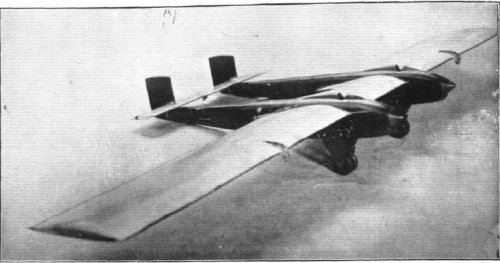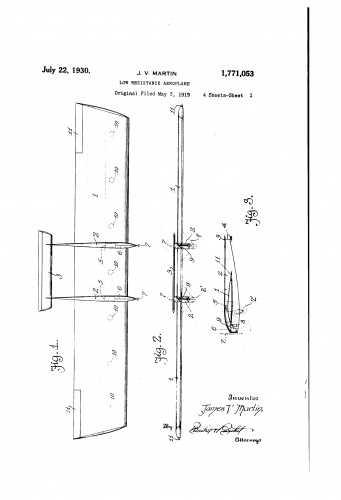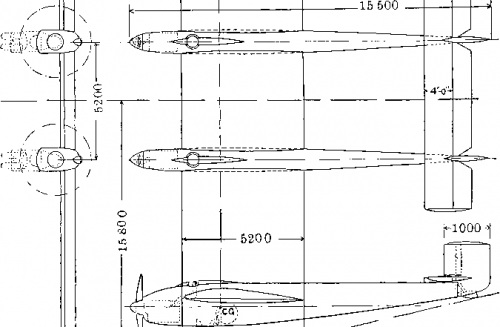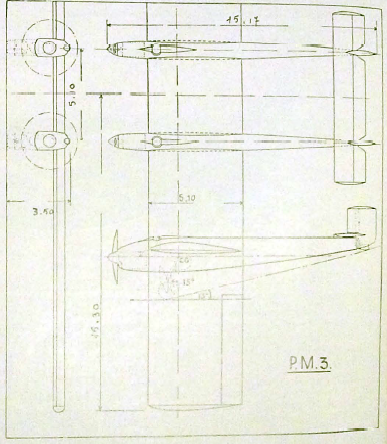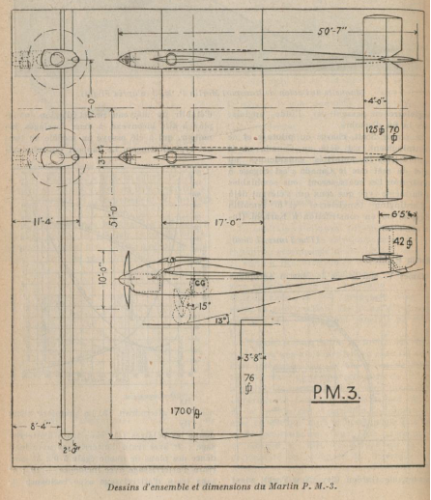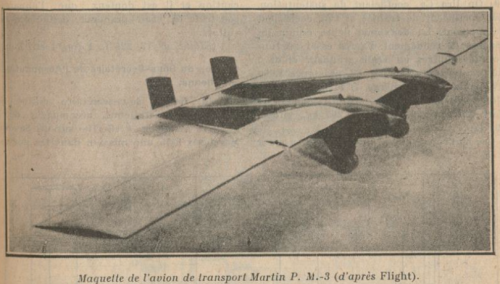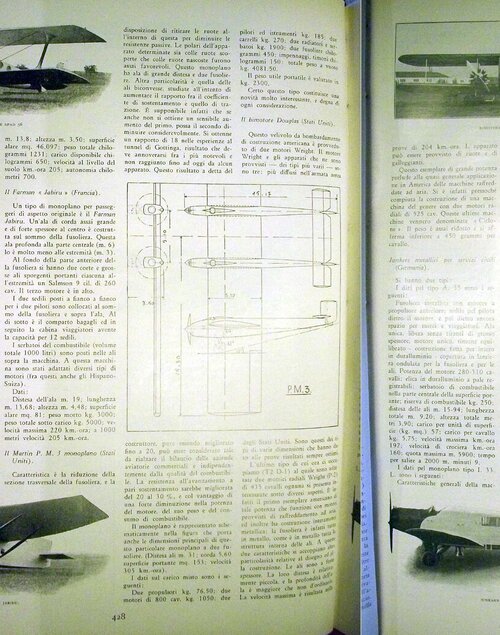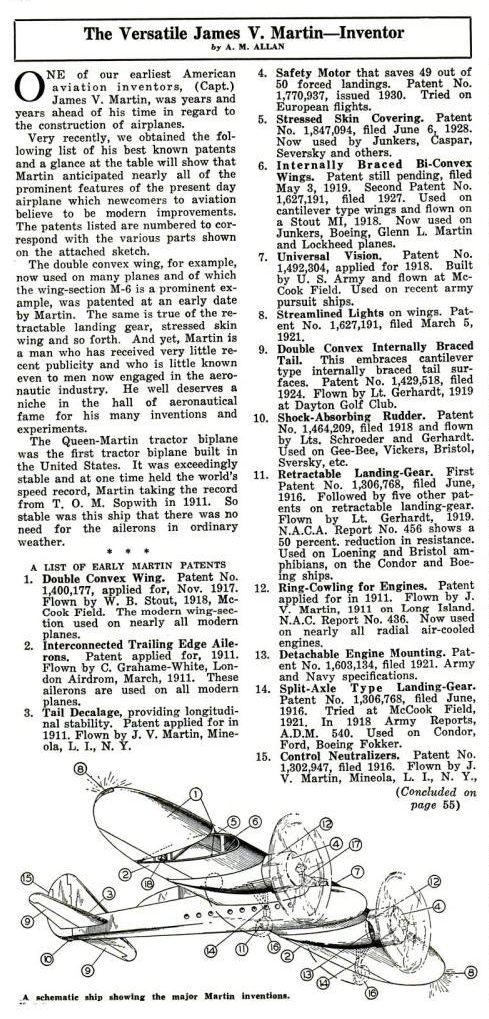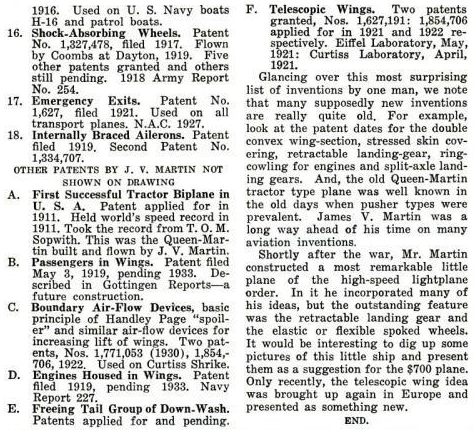You are using an out of date browser. It may not display this or other websites correctly.
You should upgrade or use an alternative browser.
You should upgrade or use an alternative browser.
James V. Martin Aircraft and Projects
- Thread starter hesham
- Start date
SlickDriver
ACCESS: Confidential
- Joined
- 20 June 2006
- Messages
- 161
- Reaction score
- 35
Do you have a Martin Model Number for the PM-3?
SlickDriver
ACCESS: Confidential
- Joined
- 20 June 2006
- Messages
- 161
- Reaction score
- 35
Lark you are correct it was James Martin formerly Grahame-White Company at Hendon.
The prior pdf had the start of the article
http://www.flightglobal.com/FlightPDFArchive/1927/1927%20-%200289.pdf
The prior pdf had the start of the article
http://www.flightglobal.com/FlightPDFArchive/1927/1927%20-%200289.pdf
This James Martin: http://www.earlyaviators.com/emartja1.htm
not the Irish one http://findarticles.com/p/articles/mi_gx5202/is_1990/ai_n19121906
and not Glenn L. Martin http://www.marylandaviationmuseum.org/history/glenn_martin/index.html
in case others were as confused as I was.
not the Irish one http://findarticles.com/p/articles/mi_gx5202/is_1990/ai_n19121906
and not Glenn L. Martin http://www.marylandaviationmuseum.org/history/glenn_martin/index.html
in case others were as confused as I was.
- Joined
- 26 May 2006
- Messages
- 34,911
- Reaction score
- 15,788
Attachments
- Joined
- 26 May 2006
- Messages
- 34,911
- Reaction score
- 15,788
And from Flugsport;
http://www.luftfahrt-bibliothek.de/zeitschrift-flugsport-oskar-ursinus-luftsport-luftfahrt-luftverkehr/luftsport-luftfahrt-luftverkehr-flugsport-1927/zeitschrift-flugsport-1927-luftsport-luftverkehr-luftfahrt.htm
http://www.luftfahrt-bibliothek.de/zeitschrift-flugsport-oskar-ursinus-luftsport-luftfahrt-luftverkehr/luftsport-luftfahrt-luftverkehr-flugsport-1927/zeitschrift-flugsport-1927-luftsport-luftverkehr-luftfahrt.htm
Attachments
That's quite a clean design for the time and an enormous amount of wing area, I guess for carrying a lot of fuel for long-duration patrols.
- Joined
- 26 May 2006
- Messages
- 34,911
- Reaction score
- 15,788
Hi,
this man designed during 1908 to 1911,a glider and a tailless pusher airplanes,followed
by a cruising tractor aircraft of 1917,and K.III & K.IV single seat biplane fighters 1918,and a cruising bomber of 1919,which was a three seat bomber/recce biplane,powered by two 350 hp Sunbeam 12 later fitted by a two
400 hp Liberty 12 engine,but there is no pictures known for last two cruiser concepts,also I spoke about his patents here;
this man designed during 1908 to 1911,a glider and a tailless pusher airplanes,followed
by a cruising tractor aircraft of 1917,and K.III & K.IV single seat biplane fighters 1918,and a cruising bomber of 1919,which was a three seat bomber/recce biplane,powered by two 350 hp Sunbeam 12 later fitted by a two
400 hp Liberty 12 engine,but there is no pictures known for last two cruiser concepts,also I spoke about his patents here;
Last edited:
- Joined
- 25 July 2007
- Messages
- 4,299
- Reaction score
- 4,197
This James Martin: http://www.earlyaviators.com/emartja1.htm ...
The 'Martin Tractor Aeroplane' illustrated at the top of that page is elsewhere described as a 'Martin-Gage'. In other words, it was Jay Gage's Tractor Bi-Plane, built by his Gage-McClay Company of of Griffith Aviation Park, Los Angeles. But what were Martin's mods?
-- http://collectair.org/images2/The_First_Aeroplane_In_Alaska.jpg
-- 2-view drawing: http://pioneeraeroplanes.com/gtb2.jpg
The only external differences that I can spot (as compared with the Fowler-Gage and the drawing link, above) is that Martin's aircraft had equal-span wings (which left the ailerons protruding to the sides). So, the 'Martin-Gage' had an equal, 30 foot span instead of the full 41 foot span. The thing is, the upper wings' "five foot extensions can be readily detached thus increasing the speed of the machine."
Aircraft, Vol. 3, No. 1 , March 1912 page 303
-- https://archive.org/stream/aircraft319121913newy/aircraft319121913newy_djvu.txt
There's some info about the Martin-Gage on The Aviation Art of Steve Remington web page: http://collectair.org/SteveRemingtonArt.html
"Jay Gage (Gage-McClay Company) built at least four of the tractor biplanes. J.V. Martin used a Gage (a Martin-Gage) for his flights in Fairbanks, Alaska in 1913".
Other Gage-McClay Tractor Bi-Planes being built for Robert G. Fowler (whose aircraft has been restored by NASM), Roy Newell Francis (who crashed at the 1913 Wyoming State Fair), and partners Philip Orin Parmelee and James Clifford Turpin. The latter pair having had only collected their Gage-McClays a month or so before Parmelee's fatal crash at Yakima, WA (thereafter, J. Clifford Turpin quit flying altogether).
More from Steve Remington:
"James V. Martin organized the first competitive air meet in America at Squantum, Mass. for the Harvard Aeronautical Society in 1910; he traveled to England in Jan. 1911 for flight training and returned with Certificate #55 and a new wife, Lilly Irvine, the first English woman aviator. Martin owned a Martin-Gage Tractor used for exhibitions. Some businessmen promoters from Fairbanks, Alaska engaged Martin in 1913 to fly at Fairbanks which entailed a circuitous steamship/rail/steamboat shipment of the crated Gage. Martin flew low over Fairbanks for 3 days; with no sale, the airplane was shipped back to San Francisco but history was made as the flights were the first airplane to fly in Alaska. Martin later owned an aircraft company, was an inventor and produced a 3-wheel microcar."
"July 3, 1913 – The first airplane flight in Alaska occurred at Fairbanks. The pilot was Army Captain J. V. Martin."
-- https://alaskahistoricalsociety.org/discover-alaska/this-month-in-alaska-history/
Actually, Martin had been a Lieutenant in the US Navy Reserve but "had billed himself as 'Captain James V. Martin, US Master Mariner and Pioneer Designer'."
- Joined
- 26 May 2006
- Messages
- 34,911
- Reaction score
- 15,788
Many thanks to you my dear Apophenia,
but was the tractor biplane of 1913 as the same of 1917,please see;
but was the tractor biplane of 1913 as the same of 1917,please see;
Attachments
- Joined
- 25 July 2007
- Messages
- 4,299
- Reaction score
- 4,197
No, totally unrelated designs.
Not "cruiser bomber" but Cruising Bomber (or Transmission Bomber - after its shaft-drive transmission). Distinctive features claimed by Martin for his Cruising Bomber included its propeller speed-reducing transmission; shaft-drive; retractable undercarriage; rubber strand wheel shock absorbers; shock-absorbing rudder; "Martin form" wing tips (with "double convex aileron"s); etc.
Inquiry Into Operations of the United States Air Services, Volume 2, Parts 3-4, United States Congress House Select Committee of Inquiry into Operations of the United States Air Services, pp 3225-3226
"The Air Services acquired a prototype of the bomber for testing at McCook Field, but during engine tests the airplane's transmission fell apart, so it was never flown. For reasons never explained, the airplane later was destroyed by firing incendiary machine gun bullets into it. Martin was incensed. He claimed his airplane was destroyed because [the Martin Aeroplane Factory of Elyria, OH] was not one of the manufacturers favored by Air Service officers."
Martin probably wanted the bomber back to further his 1912 ambition to fly the Atlantic (having claimed that his bomber design "was capable of transoceanic flight." [here quoting from Winged Defense: The Development and Possibilities of Modern Air Power - Economic and Military, William Mitchell, G.P. Putnam's Sons Press, New York, 1925.]
The Army and Its Air Corps: Army Policy toward Aviation, 1919-1941, Dr. James P. Taylor, Lt Col, USAF, Retired, Air University Press, MAxwell Air Force Base, Alabama, June 1998, page 34.
Apparently, there is a photo of the Martin bomber on Page 471 of Scientific American, Volume 123 (1920, but I'm not sure which month), with a discussion of the 7-ton bomber's transmission.
... cruiser bomber of 1919...
Not "cruiser bomber" but Cruising Bomber (or Transmission Bomber - after its shaft-drive transmission). Distinctive features claimed by Martin for his Cruising Bomber included its propeller speed-reducing transmission; shaft-drive; retractable undercarriage; rubber strand wheel shock absorbers; shock-absorbing rudder; "Martin form" wing tips (with "double convex aileron"s); etc.
Inquiry Into Operations of the United States Air Services, Volume 2, Parts 3-4, United States Congress House Select Committee of Inquiry into Operations of the United States Air Services, pp 3225-3226
"The Air Services acquired a prototype of the bomber for testing at McCook Field, but during engine tests the airplane's transmission fell apart, so it was never flown. For reasons never explained, the airplane later was destroyed by firing incendiary machine gun bullets into it. Martin was incensed. He claimed his airplane was destroyed because [the Martin Aeroplane Factory of Elyria, OH] was not one of the manufacturers favored by Air Service officers."
Martin probably wanted the bomber back to further his 1912 ambition to fly the Atlantic (having claimed that his bomber design "was capable of transoceanic flight." [here quoting from Winged Defense: The Development and Possibilities of Modern Air Power - Economic and Military, William Mitchell, G.P. Putnam's Sons Press, New York, 1925.]
The Army and Its Air Corps: Army Policy toward Aviation, 1919-1941, Dr. James P. Taylor, Lt Col, USAF, Retired, Air University Press, MAxwell Air Force Base, Alabama, June 1998, page 34.
Apparently, there is a photo of the Martin bomber on Page 471 of Scientific American, Volume 123 (1920, but I'm not sure which month), with a discussion of the 7-ton bomber's transmission.
- Joined
- 9 October 2009
- Messages
- 21,976
- Reaction score
- 13,638
Frocked rank?Actually, Martin had been a Lieutenant in the US Navy Reserve but "had billed himself as 'Captain James V. Martin, US Master Mariner and Pioneer Designer'."
- Joined
- 25 July 2007
- Messages
- 4,299
- Reaction score
- 4,197
Frocked rank?
Perhaps. But wouldn't Martin have lost any frocked rank upon leaving active service?
Aubi
ACCESS: Secret
"After being enlisted into the US Naval Reserve from Elyria, Ohio in last month of 1918, Captain Martin of the Relief Delivery Vessel USS Lake Fray was back in his pre-war role as Master Mariner."
So he was captain of a ship, not captain in rank.
So he was captain of a ship, not captain in rank.
Attachments
- Joined
- 26 May 2006
- Messages
- 34,911
- Reaction score
- 15,788
A document about James Martin,
I seem to remember a James Martin who wrote about shuttle derived concepts
Any relation?
Any relation?
- Joined
- 11 March 2012
- Messages
- 3,249
- Reaction score
- 3,179
Two different rank structures."After being enlisted into the US Naval Reserve from Elyria, Ohio in last month of 1918, Captain Martin of the Relief Delivery Vessel USS Lake Fray was back in his pre-war role as Master Mariner."
So he was captain of a ship, not captain in rank.
In Army or Marine parlance, a captain is usually the second rank applied to junior officers: lieutenant, captain, major, lieutenant colonel, colonel and general ranks. Army lieutenants. and captains lead from the front and often suffer heavy casualties in infantry battles. Majors are one step back, coordinating supplies, artillery, etc. Army colonels lead from the rear, usually still within range of enemy artillery.
OTOH the navy has fewer rank distinctions: lieutenant., lt. commander, commander and above that admiral ranks.
... so an army captain is only equal to a naval lieutenant. senior grade,
... and a naval captain/commander (in command of a ship) is equivalent to an army colonel.
- Joined
- 26 May 2006
- Messages
- 34,911
- Reaction score
- 15,788
I seem to remember a James Martin who wrote about shuttle derived concepts
Any relation?
I think not.
Similar threads
-
-
Projects by Pierre Mauboussin 1927 - 1940
- Started by hesham
- Replies: 21
-
-
-

